 |
|
|
| üĪ |
Technical Support
|
|
|
| üĪ |
Technology
|
|
|
| üĪ |
Examples
|
|
|
| üĪ |
Theoretical Basis
|
|
|
|
|
|
Integration with DuCOM
Sorry, under construction!
At concrete laboratory, department of civil engineering, University of Tokyo, the integration of the structural response analysis system which carries out the simulation of the nonlinear mechanical response of concrete structures (Code Name COM3 and WCOMD) and the microstructure model of the inorganic composite material substance balance/migration analysis system which consists of C-S-H gel particle of the nano meter scale forming cement hardening body (Code Name DuCOM) is advanced in the shape into which analysis technology is developed further 1)-4) etc..
That is a grand design which carries out the life span simulation from hydration of water and cement to distruction or recycle through servise start and maintenance. Establishment of the technology of predicting behavior "from a cradle to a graveyard (renewal)" of concrete is just aimed at.
It is considered to be the greatest merit of the integration that organic and legitimate system re-formation can be pursued from a viewpoint which looks down at a totality, by once removing the wall of so-called "material", "structure" and "construction" which can be referred to as having so far developed individually. Simultaneously, it is with the important point which it cannot overlook that it also becomes an applicable tool to rationalization of design/verification and life cycle assessment for the newly constructed and the existing structures, and it becomes possible to acquire very powerful information which does not allow other following including overseas, either.
It is also considered that the issu by combined factors, such as "What will happen, forexample, if a structure under the live load exceeding design assumption value, which exists in a seashore receives a large earthquake motion comparable as the Hyogo-ken Nambe Earthquake?", may be evaluated in the unifed framework, and possibility that pursueing of rationalization or clear accountability (to especially citizen) can be achieved.
While both hardware and software need to be progressed and it is necessary to spend time for a while by the ability to predict the lifetime of the arbitrary structures under all conditions (= life span simulation), about the integration of two systems, establishment of a framework has been already finished and it goes into the stage which deals with production or progress in each elementary technology. An applicable range is also increasing gradually and development is advanced day by day.
In addition, COMS Engineering has also taken over analysis service separately about material behavior using the full version of DuCOM (article not for sale).
#Since it is in the conditions that these contents are updated at any time, please confirm for details by the references below, or various references and at the web site of concrete laboratory. Moreover the Invited Paper (2003)3) published by ACT issue of Japan Concrete Institute serves as contents which cover this subject matter.
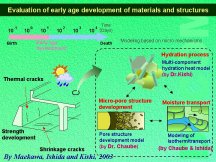
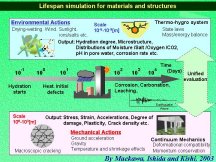
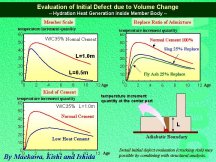
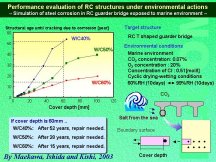
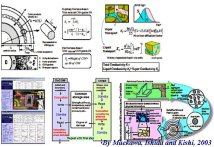
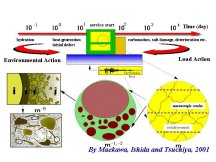
Pictures will be expanded when they are clicked.
References
| 1) |
Koichi MAEKAWA, Rajesh CHAUBE and Toshiharu KISHI : Modelling of Concrete Performance Hydration, Microstructure Formation and Transport, E & FN SPON, 1999. |
|
| 2) |
Maekawa, K., Okamura, H. and Pimanmas, A. : Nonlinear Mechanics of Reinforced Concrete, SPON PRESS, 2003. |
|
| 3) |
Koichi MAEKAWA, Tetsuya ISHIDA and Toshiharu KISHI : Multi-scale Modeling of Concrete Performance -Integrated Material and Structural Mechanics, Journal of Advanced Concrete Technology, Vol. 1, No. 2, pp.91-126, 2003. |
|
| 4) |
Koichi MAEKAWA, Tetsuya ISHIDA and Satoshi TSUCHIYA : Nonlinear Analysis Technology -Link from Nano to Macro-, Journal of Prestressed Concrete, Vol.43, No.2, pp.43-49, Japan Prestressed Concrete Engineering Association, March 2001. (in Japanese) |
|
|